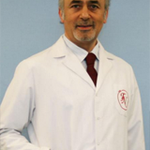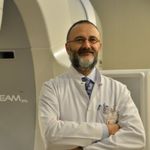























What is Pet MRI?
A PET-MRI scan combines a PET and an MRI scan into one to give detailed information about your cancer.
PET stands for positron emission tomography. It uses a mildly radioactive drug to show up areas of your body where cells are more active than normal.
MRI stands for magnetic resonance imaging. It uses magnetism and radio waves to create cross-section pictures of the body. It shows up soft tissues very clearly.
You usually have a PET-MRI scan in the nuclear medicine or radiology department as an outpatient. These scanners tend to be only in the major cancer hospitals. So you might have to travel to another hospital to have one.
A radiographer operates the scanner. It usually takes about 45 minutes, but can take longer.
What does Group Florence Nightingale Hospitals offer patients?
How many specialists are there and what accreditation's have been awarded to Group Florence Nightingale Hospitals?





































What is Pet MRI?
A PET-MRI scan combines a PET and an MRI scan into one to give detailed information about your cancer.
PET stands for positron emission tomography. It uses a mildly radioactive drug to show up areas of your body where cells are more active than normal.
MRI stands for magnetic resonance imaging. It uses magnetism and radio waves to create cross-section pictures of the body. It shows up soft tissues very clearly.
You usually have a PET-MRI scan in the nuclear medicine or radiology department as an outpatient. These scanners tend to be only in the major cancer hospitals. So you might have to travel to another hospital to have one.
A radiographer operates the scanner. It usually takes about 45 minutes, but can take longer.
What does Group Florence Nightingale Hospitals offer patients?
How many specialists are there and what accreditation's have been awarded to Group Florence Nightingale Hospitals?






















What is Pet MRI?
A PET-MRI scan combines a PET and an MRI scan into one to give detailed information about your cancer.
PET stands for positron emission tomography. It uses a mildly radioactive drug to show up areas of your body where cells are more active than normal.
MRI stands for magnetic resonance imaging. It uses magnetism and radio waves to create cross-section pictures of the body. It shows up soft tissues very clearly.
You usually have a PET-MRI scan in the nuclear medicine or radiology department as an outpatient. These scanners tend to be only in the major cancer hospitals. So you might have to travel to another hospital to have one.
A radiographer operates the scanner. It usually takes about 45 minutes, but can take longer.
What does Group Florence Nightingale Hospitals offer patients?
How many specialists are there and what accreditation's have been awarded to Group Florence Nightingale Hospitals?
CONTACT SUCCESSFUL